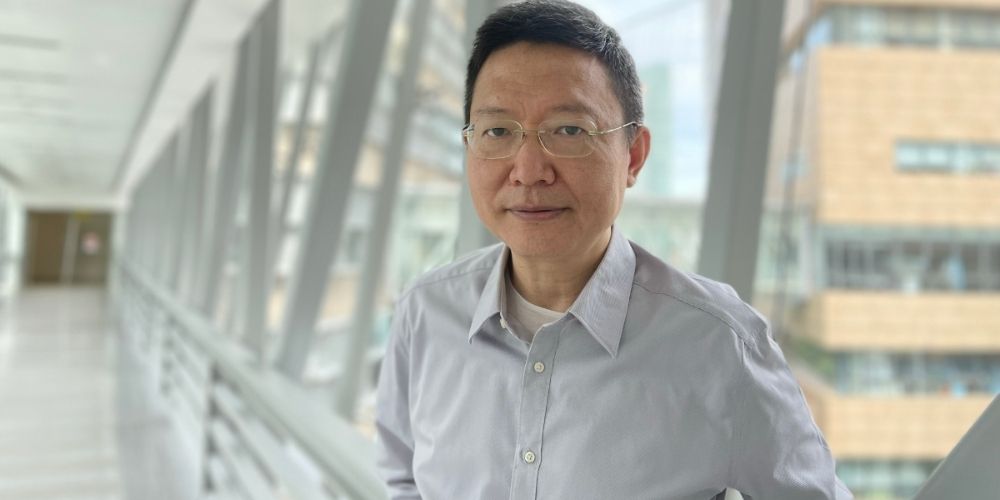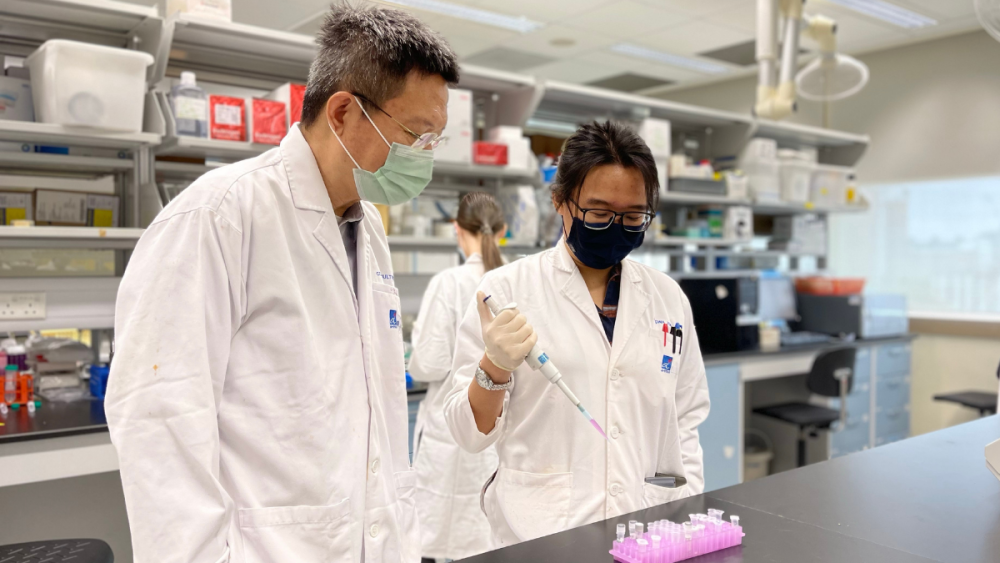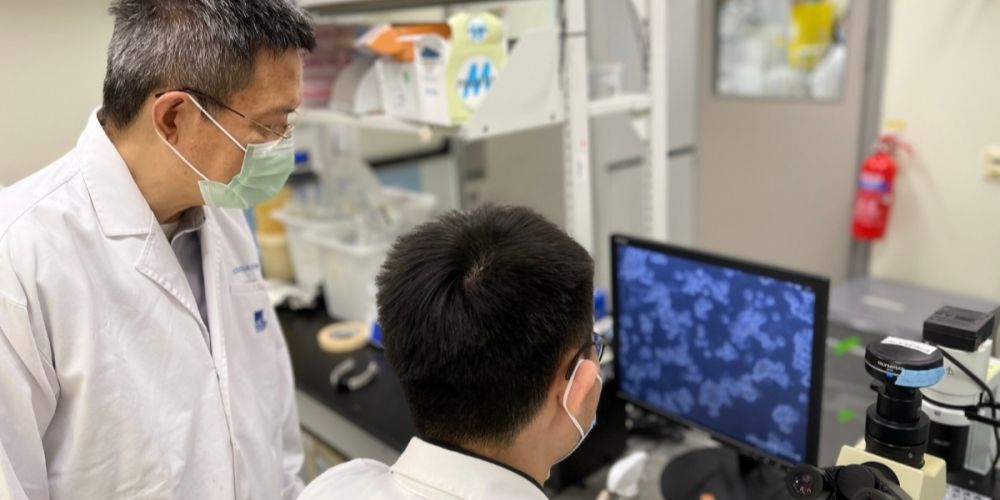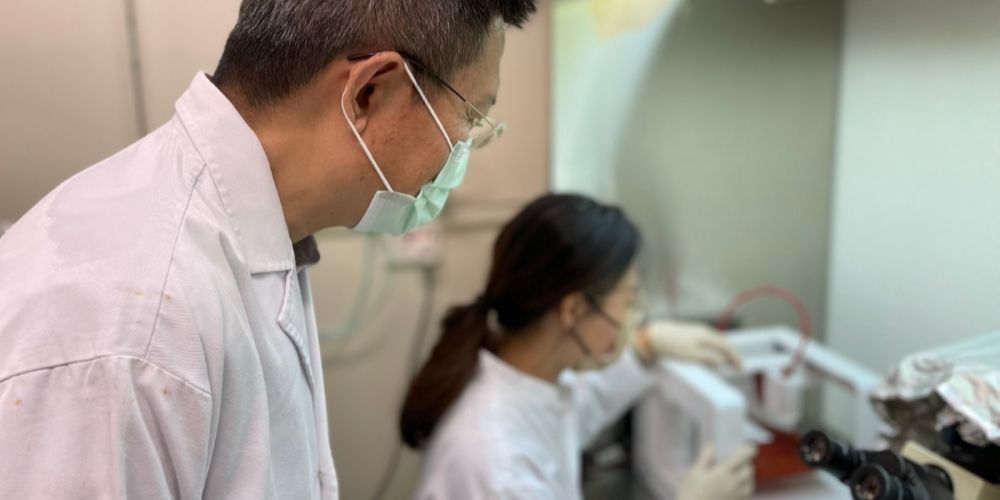FACES OF A*STAR
Biology and Engineering: Crossing all Borders
 Prof. Hanry Yu
Prof. Hanry YuSenior Principal Investigator, Institute of Bioengineering and Bioimaging (IBB)
Trained by the best interdisciplinary scientists and institutions in the USA and Europe, Prof. Hanry Yu set up the first Tissue Engineering group in Singapore in 1998, at A*STAR’s Institute of Materials Research and Engineering (IMRE). The group grew, spun-off many leaders and entities in academia and industry worldwide; and he continues this mission at IBB.
His vision is to bring deep biological insights into the mechanistic black box plaguing biomedical engineers and biomaterials researchers. Biologists like new ideas and engineers/clinicians like real-life solutions. Only by truly marrying biology into engineering, would the engineering innovation be rational and systematic, instead of by trial and error.
 The lab focuses on innovative biomaterials for tissue engineering and cultured meat.
The lab focuses on innovative biomaterials for tissue engineering and cultured meat.
Prof. Yu has spent the past two and a half decades researching on how to create a healthy home (microenvironment, or niche) for biological cells outside of the body so that they can form a cohesive community (tissue construct, or model) that effectively does its job as if in a human body. In collaboration with MIT and NUS, his group has developed a new microscope image analysis and AI tools to monitor how healthy the cells and tissues are. Prof. Yu also co-developed the mechanobiology framework to understand how to make cells and tissues more robust. Armed with the relevant cutting-edge knowledge of how cells and tissues perform their functions, Prof. Yu has developed several novel biomaterials, chips, and bioreactors, to build happy homes for cells and tissues.
 Prof Yu and MD-PhD student Jacky Zhao working on iPSC-derived Kupffer cells
Prof Yu and MD-PhD student Jacky Zhao working on iPSC-derived Kupffer cells
These translate into useful solutions for critical industrial problems in drug development, medical diagnostics, environmental health, and food security. These innovations have resulted in the licensing of a dozen of patents to support multiple startups and winning two A*STAR Scientist-Entrepreneur awards in 2013 and 2016.
As part of A*STAR’s 30th anniversary celebrations in November 2021, Prof. Hanry Yu and his research on second-harmonic generation (SHG) microscopy was featured as one of A*STAR’s 30 top innovations and inventions.
While his work is well-recognised today, the researcher at the Institute of Bioengineering and Bioimaging (IBB) would tell you about the frustration he faced in the early 2000s. Back then, SHG and Chip technologies were used in the physics and semi-conductor industries, but Prof. Yu saw their potential applications in biomedical diagnostics and drug discovery. Not everyone felt the same way as interdisciplinary science was not mainstream. He recounts of earlier days when his work was viewed as being too technical for clinical journals and not novel enough for technical journals.
Q: Was there a time you felt like your interdisciplinary research work was not appreciated? What kept you going even when you faced obstacles in the field of research?
A: It’s understandable that experts in specialised research disciplines may not fully appreciate what they don’t understand outside their fields of expertise. The focus on the calling and mission is what keeps me going. I focus on training a generation of bioengineers who can build interdisciplinary research teams to integrate deep knowledge from multiple disciplines into innovative solutions, and to contribute to the national efforts of building up the biomedical industry in Singapore to impact the world.
 Prof Yu's team also works on developing a 3D printing method to streamline developmental toxicity testing
Prof Yu's team also works on developing a 3D printing method to streamline developmental toxicity testing
Q: Do you have any tips for young researchers on their pursuit of scientific research?
A: Impactful solutions that can solve complex real-life problems are often found across the borders between disciplines, institutions, and cultural perspectives. This is a road less travelled and your journey will be less guided. At times, you may feel that your efforts are not appreciated, however if you are able to persevere and filter out external pressure or noise and focus on your mission, you will see an impact. Staying focused is key - Don’t try to do everything, you’ll end up accomplishing nothing.
 The team at the Institute of Bioengineering and Bioimaging (From left to right: Kartik Mitra Venkat, Song Yoohyun, Chen Qimin, Zhou Hanzhang Helen, Marie Beatrix Kruth, Soong Yun Ting, Hanry Yu, Larry Loo Sai Weng)
The team at the Institute of Bioengineering and Bioimaging (From left to right: Kartik Mitra Venkat, Song Yoohyun, Chen Qimin, Zhou Hanzhang Helen, Marie Beatrix Kruth, Soong Yun Ting, Hanry Yu, Larry Loo Sai Weng)
Was this article helpful?
A*STAR celebrates International Women's Day

From groundbreaking discoveries to cutting-edge research, our researchers are empowering the next generation of female science, technology, engineering and mathematics (STEM) leaders.
Get inspired by our #WomeninSTEM
